

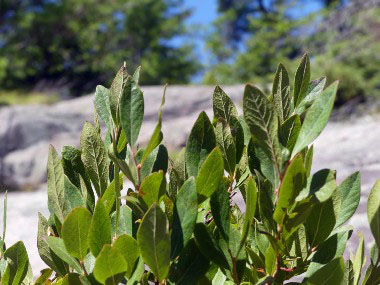
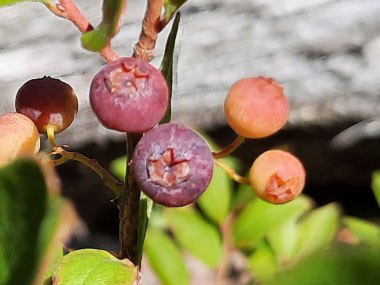
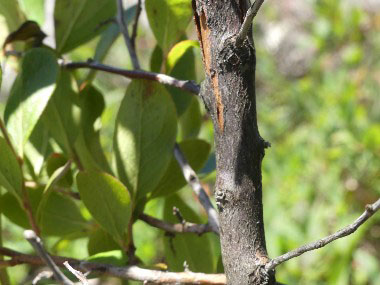
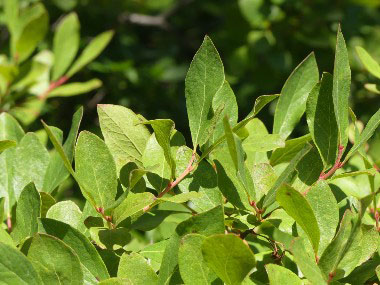
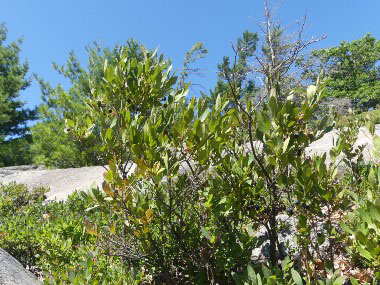
To support our efforts please browse our store (books with medicinal info, etc.).
There are many species of deciduous huckleberries across the U.S., Canada, and throughout Europe and Asia. Huckleberries are in the Ericaceae (heath) family producing antioxidant-rich berries that are enjoyed by people and wildlife. This shrub spreads in sunlit areas to form thickets, but its seeds are short-lived and difficult to germinate. There are many species of huckleberries in both the Vaccinium and Gaylussacia genera. Vaccinium ovatum are evergreen huckleberries that are native to western North America. The huckleberry is Idaho’s state fruit.
Trunk/Bark
Depending on the age of the shrub, the bark is gray-brown, and it tends to finely peel or 'break apart".
Branches/Twigs
The branches are very small and are more twig-like. They are slender, and reddish brown. Huckleberry is a densely branching shrub.
Height
Huckleberry shrubs can get to 1.20 metres (4') tall depending on the exact species.
Leaves/Needles
Leaves on this shrub grow alternate, they are simple, elliptical to obovate in shape, and the leaves have ciliate margins (fine hairs. Leaves measure 2.5 to 3.5cm (1 to 1.5") long, are typically bright green above, and the underside is a dull green to almost yellow with resin dots. (These dots you will need a loupe or magnifying glass to see them.)
Flowers
Huckleberry flowers are small, 1.5 cm (.25") long, are white to pink bell-shaped with 5 lobes in small axillary clusters. They appear in springtime.
Fruit
The fruit is somewhat small, round, and is blue-black. A huckleberry usually measures 8mm (0.35") across. It is a shiny berry-like drupe that ripens in late summer. They are easily distinguished from blueberries by its ten large seeds. (Blueberry seeds are much smaller.)
Habitat
Typically, these grow in dry or moist woods, thickets and in acidic sandy soils. Huckleberries grow across the U.S. and Canada but there are many different species of them. Some are in the Vaccinium species.
Edible Parts
The ripe berries are edible but are not that sweet. The large seeds make it difficult to eat (unlike a blueberry).
Other Name
Common Huckleberry.
Recipes
Winter Survival Food Handbook

PDF Plant Magazines
Types of Wild Food
Geographic Zones Seasons
Disclaimer
EdibleWildFood.com is informational in nature. While we strive to be 100% accurate, it is solely up to the reader to ensure proper plant identification. Some wild plants are poisonous or can have serious adverse health effects.
We are not health professionals, medical doctors, nor are we nutritionists. It is up to the reader to verify nutritional information and health benefits with qualified professionals for all edible plants listed in this web site. Please click here for more information.
Why Edible Wild Food?
- Food costs are rising
- Free, wild food is readily abundant
- Wild food adds nutrition to your diet
- Wild food can help treat various medical conditions





